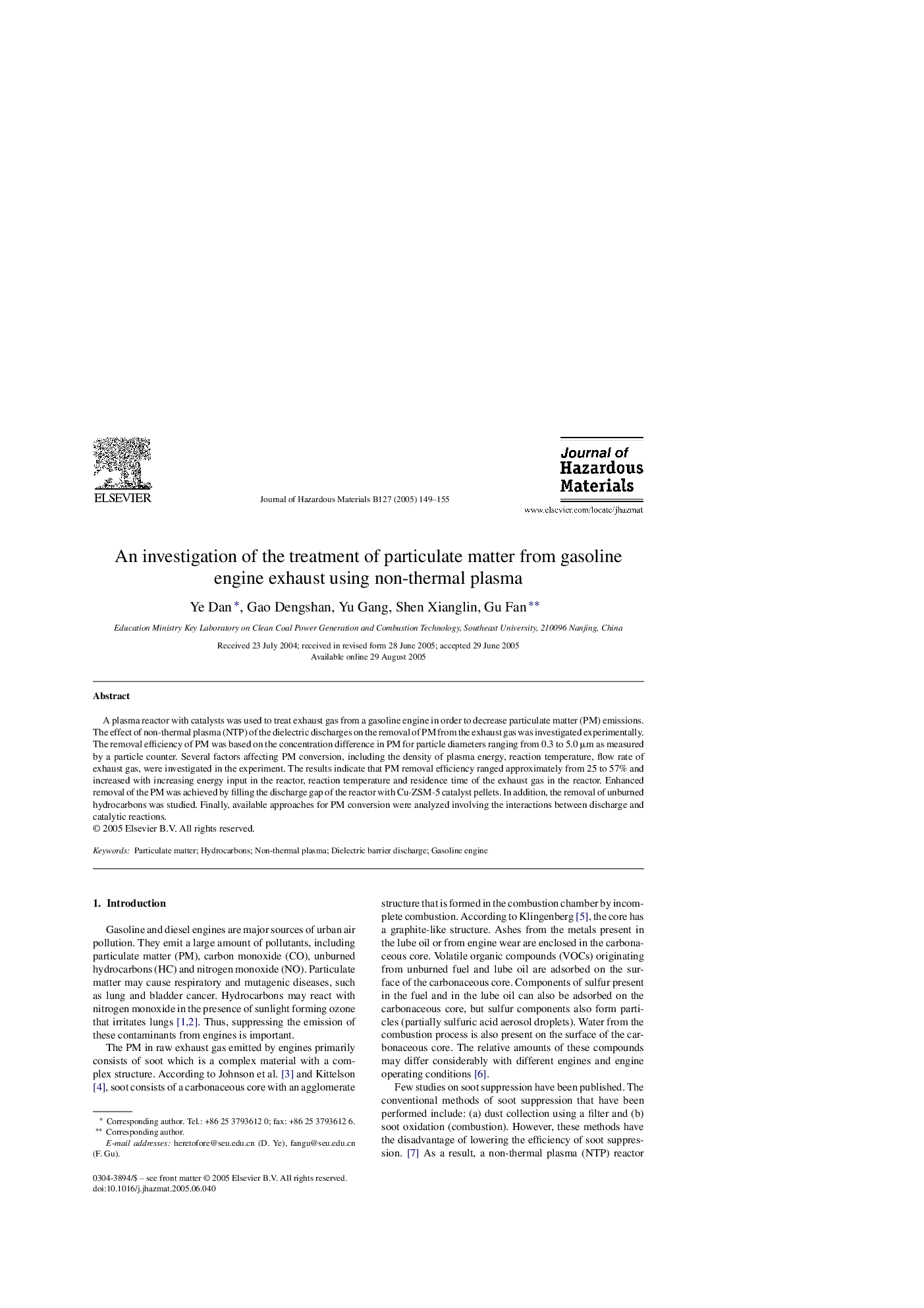| Article ID | Journal | Published Year | Pages | File Type |
|---|---|---|---|---|
| 9674070 | Journal of Hazardous Materials | 2005 | 7 Pages |
Abstract
A plasma reactor with catalysts was used to treat exhaust gas from a gasoline engine in order to decrease particulate matter (PM) emissions. The effect of non-thermal plasma (NTP) of the dielectric discharges on the removal of PM from the exhaust gas was investigated experimentally. The removal efficiency of PM was based on the concentration difference in PM for particle diameters ranging from 0.3 to 5.0 μm as measured by a particle counter. Several factors affecting PM conversion, including the density of plasma energy, reaction temperature, flow rate of exhaust gas, were investigated in the experiment. The results indicate that PM removal efficiency ranged approximately from 25 to 57% and increased with increasing energy input in the reactor, reaction temperature and residence time of the exhaust gas in the reactor. Enhanced removal of the PM was achieved by filling the discharge gap of the reactor with Cu-ZSM-5 catalyst pellets. In addition, the removal of unburned hydrocarbons was studied. Finally, available approaches for PM conversion were analyzed involving the interactions between discharge and catalytic reactions.
Keywords
Related Topics
Physical Sciences and Engineering
Chemical Engineering
Chemical Health and Safety
Authors
Ye Dan, Gao Dengshan, Yu Gang, Shen Xianglin, Gu Fan,
